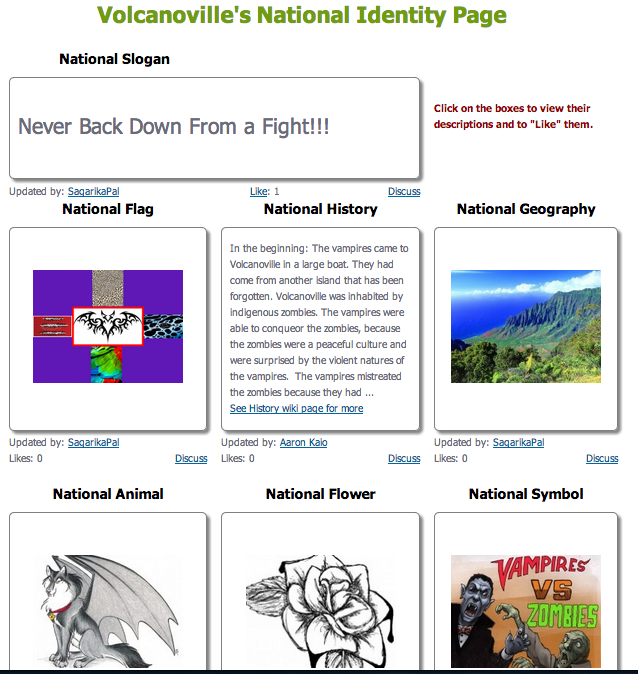Family Avatars
One of our current focuses is improving the “family provider” element students experience in Civic Mirror. This has always been one of the simulation’s key drivers: students must provide families with food, shelter, healthcare, education and a bunch of other things in an shared economy… challenging them to compete and cooperate with classmates. Because the game starts with shortages, conflict ensues over who gets what. And amazingly, when students create identities for these family members, they just seem to care more! No one wants to be the one who can’t keep their family members alive.

Up until now the online program only allowed students to enter names and relations for family members. But in 2.4.5 we have released features where students can now add pictures, bios, genders, and ages! And we have also tweaked the “Citizen Home Pages” to make it super easy for students to view one another’s families… and those of citizens from other countries too.
Our expectation is that these added family identity layers will not only improve the attachments CM participants have towards their families, but it will add fuel to the political, economic, and legal plot-lines that the simulation brings about. If Tony, for example, can’t provide food for his family and his Uncle Luke dies at the end of a simulated year, with these added layers of family identity, it will likely be easier for Tony to imagine the pain and shame and anger he might feel if something like this happened to someone in real life … And we’re hoping this will increase his desire to take civic or legal action in his simulated Town Hall or National Court… especially if a corrupt government, unjust laws, or nepotism were to blame.
And above all, creating identities for your simulated family members is just plain fun.
National Identity Items
Like we explained in our 2.4.1 release, we have exciting plans in store for CM World: the space where teachers and students can see what’s going on in other simulated countries. In preparation for that, however, we developed and are releasing in 2.4.5 features that make it easier for countries to create and broadcast their national identities.
Waaay Better National Identity Pages
Like with families, it’s remarkable how a name and a few symbols makes it easier for students to feel like members of a “real” nation. Formerly we used wiki pages to allow students to share their national identity items, but the wiki pages wouldn’t allow users to share and showcase their country throughout civicmirror.com. These new National Identity pages are fantastic and will take things to a whole new level in this regard.
To see what they look like, check out the first country to fully use their new National Identity page: Volcanoville. This is a country of 8th Grade students from Badger Rock Middle School in Madison, Wisconsin… led by their phenomenal teacher, Mr. Aaron Kaio.

National Images Throughout CivicMirror.com

Flag on Country Homepage
The new National Identity pages are very important for our future goals of inter-country participation because they will allow users to quickly and easily showcase their national identities, which will (hopefully) increase their sense of “belonging” to their simulated countries. We also believe this shared content will improve the “visiting other countries” experience too.
For example, the 8th Grade students at Gyeonggi Suwon International School, running a country called “United States of Vandermeer”, were the first to upload their national flag. Now, and as you can see in the images to the right, their flag appears in various places throughout the program.
And as the image below shows, now, when visiting a country, the flag appears beside the CM Event that country is in (beforehand it was all rather confusing when visiting a country).

Removal of Wiki Pages
The last 2.4.5 feature we want to talk about (there are many more) is our removal of most of the wiki-pages within civicmirror.com. While the templated i) Constitution, ii) Legislation, iii) Court Rulings, and iv) History pages will remain, we removed several others. We also took away students’ ability to create new their own wiki pages. This was a tough decision, but our reasons were the following:
- The new family and national identity features (above) are far superior to the wiki-versions of these pages
- Our discussion forums and wiki pages largely did the same things and were competing against one another
- The forums were way better at generating conversation, and
- We couldn’t integrate wiki page content throughout the site.
